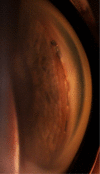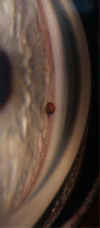Microinvasive glaucoma surgery: a review and classification of implant-dependent procedures and techniques
- PMID: 33988310
- PMCID: PMC9291507
- DOI: 10.1111/aos.14906
Microinvasive glaucoma surgery: a review and classification of implant-dependent procedures and techniques
Abstract
The aim of this article is to discuss how physiology and anatomical background affect the effectiveness of implant-dependent microinvasive glaucoma surgery (MIGS). First, we provide a micro view of aqueous outflow and tissue behaviour. Second, we review studies exploring the mechanisms of the pressure-lowering effect of MIGS, as well as tissue behaviour during aqueous flow and tissue motion. We also describe and classify microinvasive surgical procedures and the most important types of implants, as well as their mechanisms of action, implantation techniques and efficacy. Further, we summarize the indications and surgical results presented in recent studies, providing an evidence-based update on novel and emerging MIGS techniques for the treatment of open-angle glaucoma. These data can help surgeons to personalize the management of glaucoma and to choose the best MIGS option for individual glaucoma patients.
Keywords: MIGS; glaucoma; implants; microinvasive surgery.
© 2021 The Authors. Acta Ophthalmologica published by John Wiley & Sons Ltd on behalf of Acta Ophthalmologica Scandinavica Foundation.
Figures











References
-
- Achache F (2001): Anatomical features of outflow pathway. In Mermoud, A & Shaarawy, T (eds.). Non‐penetrating glaucoma surgery. London: M. Dunitz, pp. 21–32.
-
- Acosta AC, Espana EM, Yamamoto H et al. (2006): A newly designed glaucoma drainage implant made of poly(styrene‐b‐isobutylene‐b‐styrene): biocompatibility and function in normal rabbit eyes. Arch Ophthalmol 124: 1742–1749. - PubMed
-
- Alvarado JA, Betanzos A, Franse‐Carman L, Chen J & González‐Mariscal L (2004): Endothelia of Schlemm's canal and trabecular meshwork: distinct molecular, functional, and anatomic features. Am J Physiol Cell Physiol 286: C621–C634. - PubMed
-
- Arrieta EA, Aly M, Parrish R, Dubovy S, Pinchuk L, Kato Y, Fantes F & Parel J‐M (2011): Clinicopathologic correlations of poly‐(styrene‐b‐isobutylene‐b‐styrene) glaucoma drainage devices of different internal diameters in rabbits. Ophthalmic Surg Lasers Imaging 42: 338–345. - PubMed
-
- Arriola‐Villalobos P, Martínez‐de‐la‐Casa JM, Díaz‐Valle D, Fernández‐Pérez C, García‐Sánchez J & García‐Feijoó J (2012): Combined iStent trabecular micro‐bypass stent implantation and phacoemulsification for coexistent open‐angle glaucoma and cataract: a long‐term study. Br J Ophthalmol 96: 645–649. - PubMed
Publication types
MeSH terms
Substances
LinkOut - more resources
Full Text Sources
Other Literature Sources

